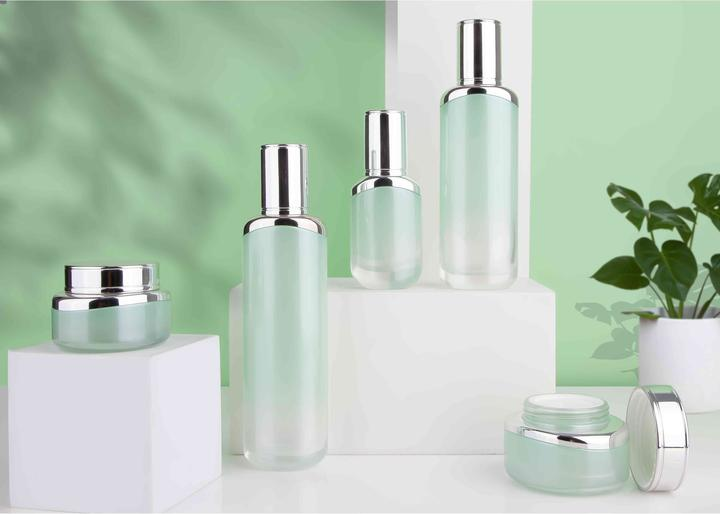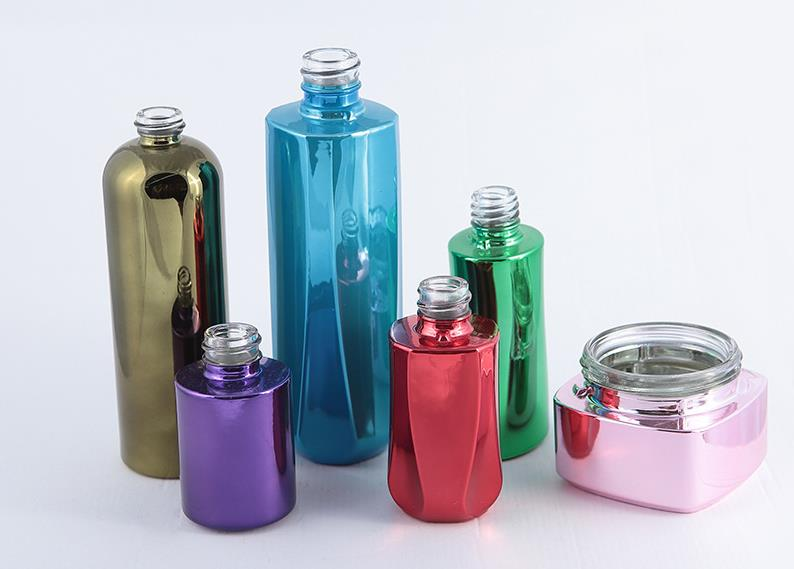Each product modification is like people's makeup. The surface needs to be coated with several layers of content to complete the surface decoration process. The thickness of the coating is expressed in microns. Generally, the diameter of a hair is seventy or eighty microns, and the metal coating is a few thousandths of it. The product is made of a combination of various metals and is plated with several layers of different metals to complete the makeup. process. This article briefly introduces the relevant knowledge of electroplating and color plating. The content is for reference by friends who purchase and supply high-quality packaging material systems:
Electroplating is a process that uses the principle of electrolysis to plate a thin layer of other metals or alloys on the surface of certain metals. It is a process that uses electrolysis to attach a metal film to the surface of metal or other material parts to prevent Metal oxidation (such as rust), improves wear resistance, conductivity, reflectivity, corrosion resistance (coated metals are mostly corrosion-resistant metals) and improves appearance.

Principle
Electroplating requires a low-voltage, high-current power supply that supplies power to the electroplating tank and an electrolytic device consisting of a plating solution, parts to be plated (cathode) and anode. The electroplating process is a process in which metal ions in the plating solution are reduced to metal atoms through electrode reactions under the action of an external electric field, and metal deposition is performed on the cathode.
Applicable materials
Most of the coatings are single metals or alloys, such as titanium, palladium, zinc, cadmium, gold or brass, bronze, etc.; there are also dispersion layers, such as nickel-silicon carbide, nickel-fluorinated graphite, etc.; and cladding layers, such as on steel Copper-nickel-chromium layer on steel, silver-indium layer on steel, etc. In addition to iron-based cast iron, steel and stainless steel, the base materials for electroplating also include non-ferrous metals, or ABS plastics, polypropylene, polysulfone and phenolic plastics. However, plastics must undergo special activation and sensitization treatments before electroplating.
Plating color
1) Precious metal plating: such as platinum, gold, palladium, silver;
2) General metal plating: such as imitation platinum, black gun, nickel-free tin cobalt, ancient bronze, ancient red copper, ancient silver, ancient tin, etc.
According to the complexity of the process
1) General plating colors: platinum, gold, palladium, silver, imitation platinum, black gun, nickel-free tin cobalt, pearl nickel, black paint plating;
2) Special plating: antique plating (including oiled patina, dyed patina, thread-threaded patina), two-color, sandblasting plating, brush line plating, etc.

1 platinum
It is an expensive and rare metal. The color is silvery white. It has stable properties, good wear resistance, high hardness and long color retention period. It is one of the best electroplating surface colors. The thickness is above 0.03 microns, and palladium is generally used as the bottom layer to have a good synergistic effect, and the seal can be stored for more than 5 years.
2 imitation platinum
The electroplating metal is copper-tin alloy (Cu/Zn), and imitation platinum is also called white copper-tin. The color is very close to white gold and slightly yellower than white gold. The material is soft and lively, and the surface coating is easy to fade. If it is closed, it can be left for half a year.
3 gold
Gold (Au) is a precious metal. Common decorative plating. Different proportions of ingredients come in different colors: 24K, 18K, 14K. And in this order from yellow to green, there will be some differences in color between different thicknesses. It has stable properties and its hardness is generally 1/4-1/6 of platinum. Its wear resistance is average. Therefore, its color shelf life is average. Rose gold is made of gold-copper alloy. According to the proportion, the color is between golden yellow and red. Compared with other golds, it is more lively, difficult to control the color, and often has color differences. The color retention period is also not as good as other gold colors and it changes color easily.
4 silver
Silver (Ag) is a white metal that is very reactive. Silver easily changes color when exposed to sulfides and chlorides in the air. Silver plating generally uses electrolytic protection and electrophoresis protection to ensure the plating life. Among them, the service life of electrophoresis protection is longer than that of electrolysis, but it is a bit yellowish, glossy products will have some tiny pinholes, and the cost will also increase. Electrophoresis is formed at 150°C, and products protected by it are not easy to rework and are often scrapped. Silver electrophoresis can be stored for more than 1 year without discoloration.
5 black gun
Metal material nickel/zinc alloy Ni/Zn), also called gun black or black nickel. The plating color is black, slightly gray. The surface stability is good, but it is prone to coloring at low levels. This plating color itself contains nickel and cannot be used for nickel-free plating. The color plating is not easy to rework and reform.
6 nickels
Nickel (Ni) is gray-white and is a metal with excellent density and hardness. It is generally used as a sealing layer for electroplating to improve the service life of electroplating. It has good purification ability in the atmosphere and can resist corrosion from the atmosphere. Nickel is relatively hard and brittle, so it is not suitable for products that require deformation during electroplating. When nickel-plated products are deformed, the coating will peel off. Nickel may cause skin allergies in some people.
7 Nickel-free tin-cobalt plating
The material is tin-cobalt alloy (Sn/Co). The color is black, close to a black gun (slightly grayer than a black gun), and it is a nickel-free black plating. The surface is relatively stable, and the low level of electroplating is prone to color. The color plating is not easy to rework and reform.
8 pearl nickel
Its material is nickel, also called sand nickel. Generally used as the pre-plated bottom layer of fog color process. Gray in color, non-glossy mirror surface, with a soft mist-like appearance, like satin. The degree of atomization is unstable. Without special protection, due to the influence of sand-forming materials, there may be discoloration in contact with skin.
9 fog color
It is based on pearl nickel to add surface color. It has a fogging effect and is matte. Its electroplating method is pre-plated pearl nickel. Because the atomization effect of pearl nickel is difficult to control, the surface color is inconsistent and prone to color difference. This plating color cannot be used with nickel-free plating or with stone after plating. This plating color is easy to oxidize, so special attention should be paid to protection.
10 brush wire plating
After copper plating, lines are brushed on the copper, and then the surface color is added. There is a sense of lines. Its appearance color is basically the same as that of general plating color, but the difference is that there are lines on the surface. Brushing wires cannot be nickel-free plating. Due to nickel-free plating, their lifespan cannot be guaranteed.
11 sandblasting
Sandblasting is also one of the methods of electroplating fog color. The copper plating is sandblasted and then electroplated. The matte surface is sandy, and the same matte color is more obvious than the sandy effect. Like brush plating, nickel-free plating cannot be done.
Post time: Nov-23-2023
